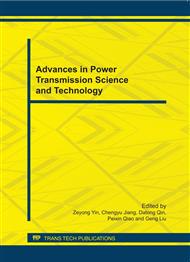p.633
p.637
p.641
p.645
p.649
p.653
p.658
p.662
p.666
Multiscale Analysis on Friction-Reducing Characteristics of Textured Surface in Nanoscale Sliding Contacts
Abstract:
A multiscale method coupled molecular dynamics simulation and finite element method is used to investigate two dimensional nanoscale sliding contacts between a rigid cylindrical tip and an elastic face centered cubic copper substrate with textured surface, in which adhesive effects are considered. Two series of nanoscale surface textures with different asperity shape, different asperity heights and different spacing between asperities are designed. Through the friction forces comparisons between smooth surface and textured surfaces, a better shape is advised to indicate that asperity shape plays an important role in friction force reduction. With proper asperity height and proper spacing between asperities, surface textures can reduce friction forces effectively.
Info:
Periodical:
Pages:
649-652
Citation:
Online since:
August 2011
Authors:
Keywords:
Price:
Сopyright:
© 2011 Trans Tech Publications Ltd. All Rights Reserved
Share:
Citation:


